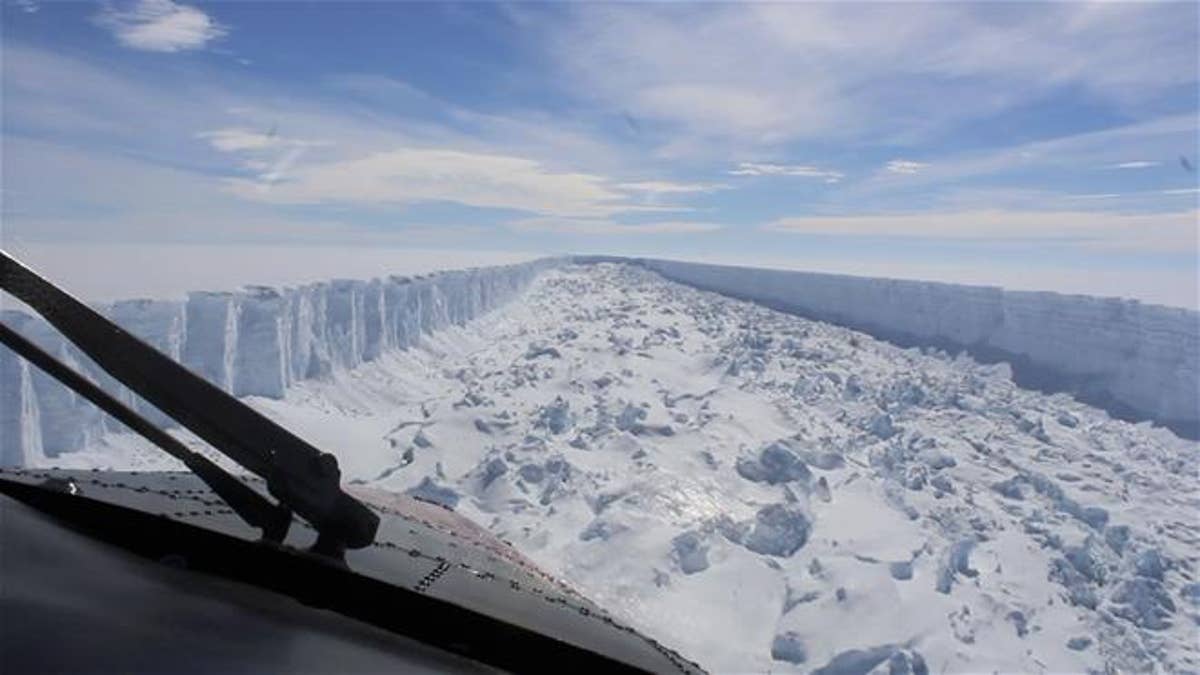
This February 2017 frame from video provided by the British Antarctic Survey shows the Larsen C ice shelf in Antarctica. A vast iceberg with twice the volume of Lake Erie broke off from the ice shelf in July. (British Antarctic Survey via AP)
When an iceberg the size of Delaware separated from the Larsen C ice shelf last July, it uncovered an Antarctic marine habitat that had been hidden from the rest of the world for over 120,000 years, Quartz reports.
Now scientists are racing to study the 3,600-square-mile ecosystem before it's forever changed by its sudden exposure to sunlight. "The calving of A-68 provides us with a unique opportunity to study marine life as it responds to a dramatic environmental change," marine biologist Dr.
Katrin Linse tells the Guardian. A-68 is the trillion-ton iceberg—the largest in the world—that broke away from the ice shelf last summer. Linse says it's a "very exciting" opportunity for scientists, but they have to hurry because new species will quickly enter the ecosystem now that it has been exposed to sunlight, USA Today reports.
British Antarctic Survey scientists led by Linse were scheduled to arrive in Antarctica on Wednesday. Over the next three weeks they'll explore 2,200 square miles of the newly exposed area while observing marine mammals and birds near the surface and taking samples of microbes and other life at the seafloor.
It won't be easy. The average temperature in the area is 15 degrees, and it's full of large hunks of sea ice. But David Vaughan, science director at the British Antarctic Survey, says studying the area is important for learning about the potential impacts of climate change on Antarctica.
"How fast species can disperse, and how fast ecosystems can colonize new areas, is key to understanding where the Antarctic is likely to be resilient, and where it is vulnerable," he tells the Guardian.
(This Antarctic explorer turned back, but his decision came too late.)
This article originally appeared on Newser: Iceberg Exposes Marine Ecosystem After 120K Years
